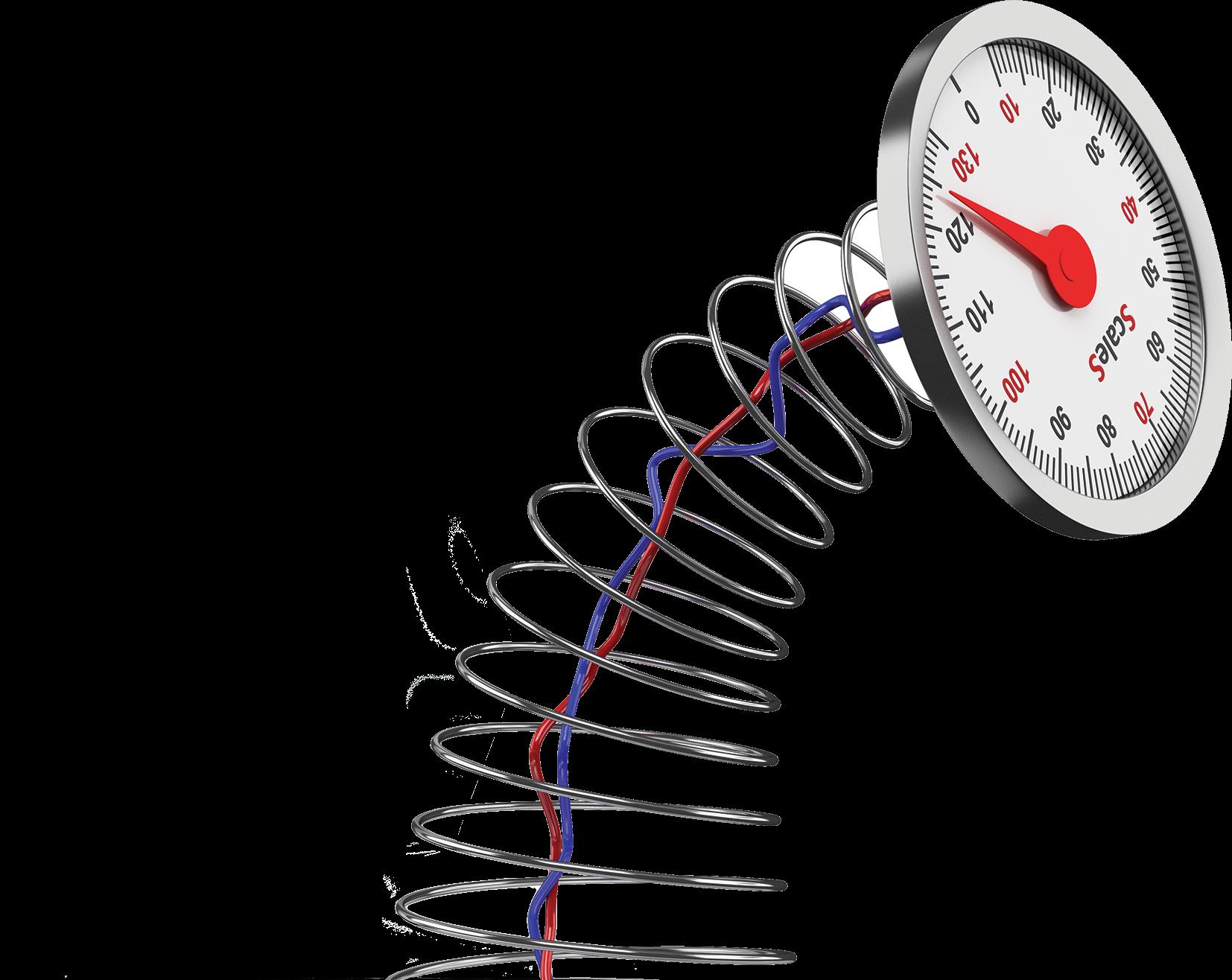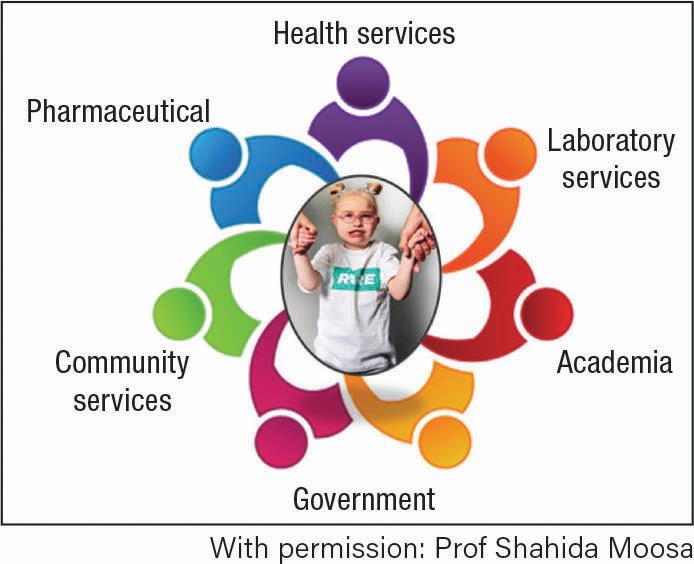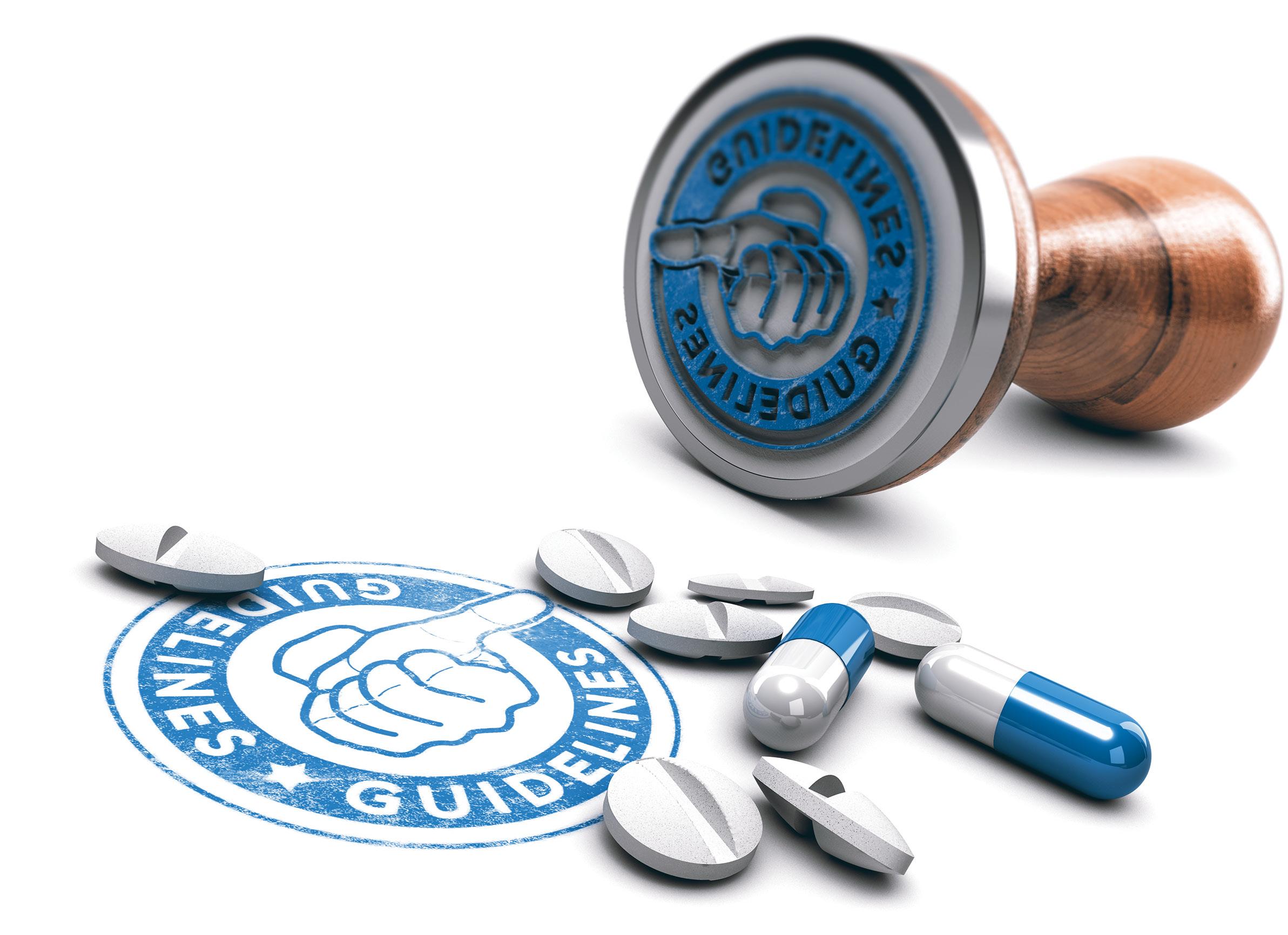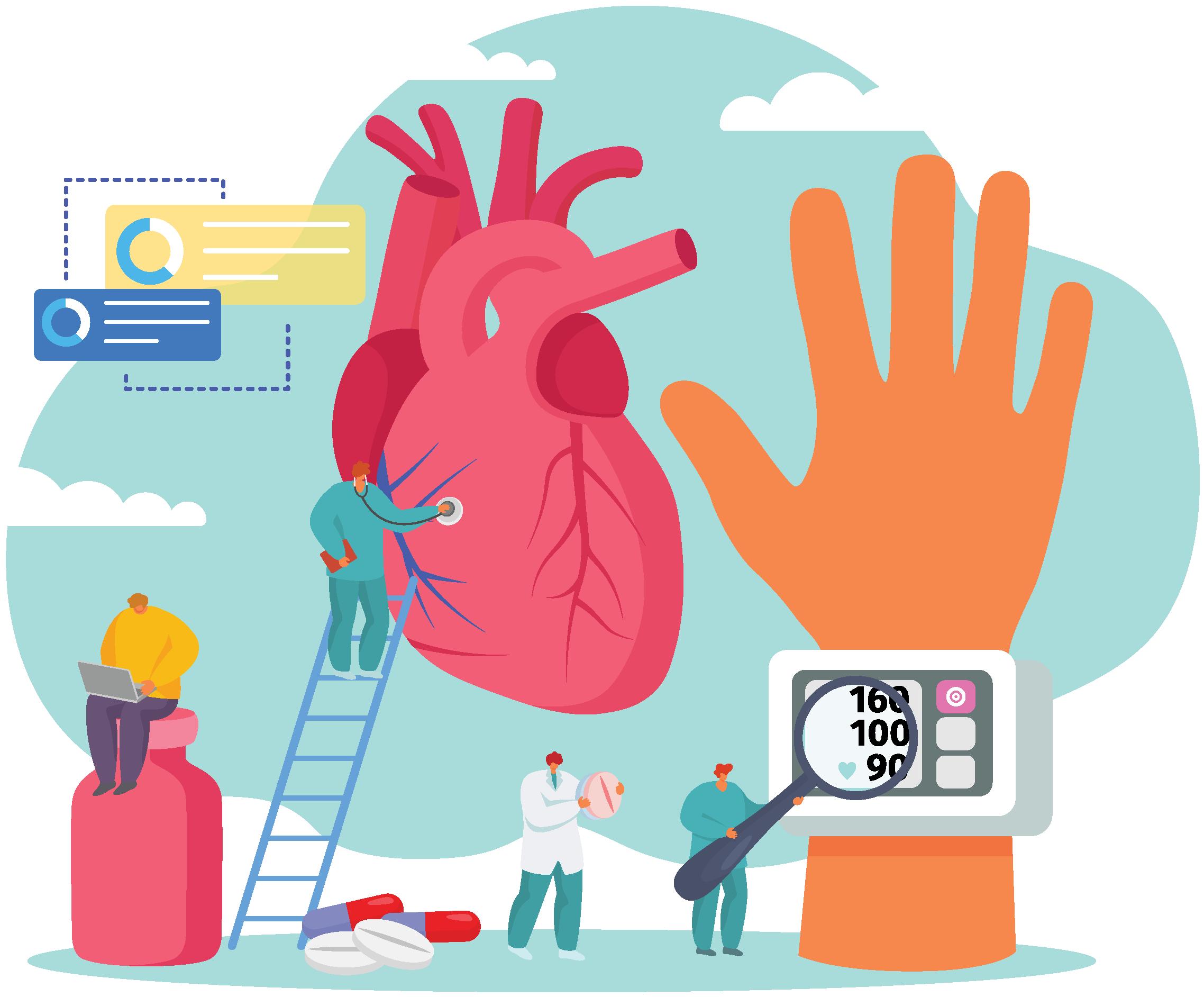
11 minute read
The cost of untreated ADHD
The cost of untreated ADHD
Attention deficit hyperactivity disorder (ADHD) is a neurodevelopmental disorder that affects children, adolescents and adults. ADHD involves problems with attention, concentration and/or increased activity levels, resulting in problems with school, work, and social situations. Individuals with ADHD also often experience trouble with impulse control.1
Advertisement
An estimated 8.4% of children and 2.5% of adults have ADHD. ADHD is often first identified in school-aged children when it leads to disruption in the classroom or problems with schoolwork. It is more common among boys than girls.1
ADHD is diagnosed according to the following criteria established by the Diagnostic and Statistical Manual of Mental Disorder-fifth edition (DSM-5):2
Inattention
» Often cannot give close attention to details or makes careless mistakes in schoolwork at work, or with other activities
» Often has trouble holding attention on tasks or play activities
» Often does not seem to listen when spoken to directly
» Often does not follow through on instructions and does not finish schoolwork, chores, or duties in the workplace (eg loses focus or is side-tracked)
» Often has trouble organising tasks and activities
» Often avoids, dislikes, or is reluctant to do tasks that require mental effort over a long period of time (such as schoolwork or homework)
» Often loses things necessary for tasks and activities (eg school materials, pencils, books, tools, wallets, keys, paperwork, eyeglasses, and mobile telephones)
» Is often easily distracted
» Is often forgetful in daily activities.
Hyperactivity and impulsivity
» Often fidgets with or taps hands or feet, or squirms in seat
» Often leaves seat in situations when remaining seated is expected
» Often runs about or climbs in situations where it is not appropriate (adolescents or adults might be limited to feeling restless
» Often unable to play or take part in leisure activities quietly
» Is often ‘on the go’ or acting as if ‘driven by a motor’
» Often talks excessively
» Often blurts out an answer before a question has been completed
» Often has trouble waiting their turn
» Often interrupts or intrudes on others (eg conversations or games).
Risk factors
Kim and colleagues recently published the findings of an extensive review aimed identifying and evaluating the evidence of environmental factors and peripheral biomarkers associated with a diagnosis of ADHD.3
Included meta-analyses were classified by the strength of the evidence of potential environmental risk factors, environmental protective factors, and peripheral biomarkers for ADHD. The five classes were convincing (class I), highly suggestive (class II), suggestive (class III), weak (class IV) and not significant (NS).3
There were 35 eligible articles, out of the original 1829 identified articles, which provided 63 unique meta-analyses (40 potential environmental factors and 23 peripheral biomarkers).
There were five environmental risk factors graded as class I (convincing):3
» Pre-pregnancy obesity (defined as body mass index [BMI] ≥30 kg/m2)
» Childhood eczema
» Hypertensive disorders during pregnancy (chronic hypertension, gestational hypertension, and pre-eclampsia
» Maternal acetaminophen exposure during pregnancy.
Class II (highly suggestive) environmental risk factors included:3
» Maternal smoking during pregnancy
» Childhood asthma
» Pre-pregnancy overweight (defined as BMI 25–29.9 kg/m2).
Class III (suggestive) evidence included some perinatal hypoxic conditions:3
» 5-minute Apgar score <7
» Breech or transverse presentation
» Preterm birth.
The highest class for parenting environmental risk factors was Class IV (weak):3
» Low education level of father and mother
» Single parent family.
Breast-feeding was determined to be the only statistically significant (class IV) environmental protective factor against ADHD.3
Furthermore, lower concentration of serum vitamin D in individuals with ADHD was the only biomarker graded as a high level of evidence (class II [highly suggestive]. Class III [suggestive] biomarkers included higher blood lead and lower blood magnesium in patients with ADHD.3
Overall, this review revealed that within the 63 identified environmental factors and biomarkers, only pre-pregnancy obesity and overweight, maternal smoking and maternal acetaminophen exposure during pregnancy retained high level of evidence as risk factors for ADHD. However, the associations are possibly not causative and so the authors suggest that high-quality primary studies are required to confirm the results of this systematic review.3
Multimodal approach to ADHD
Current practice guidelines recommend a multimodal approach in the treatment of ADHD that includes educational, behavioural, mental health interventions, and pharmacological management.1,4,5
Psychostimulants are the medications with the highest established efficacy in treating individuals with ADHD and are recommended as first-line treatment options. Methylphenidate is the most commonly prescribed and studied drug. It is known to be effective in treating all three core ADHD symptoms: carelessness, hyperactivity, and impulsivity.4
How safe is long-term therapy?
While the efficacy of stimulants is wellestablished, optimal duration of treatment is not always clear. What is clear, however, is that discontinuation of therapy can have long-term implications.4
Matthijssen et al looked at the effect of discontinuation of methylphenidate in patients with ADHD who were continuously treated for at least two years. The participants had to be on a stable regimen of either 36mg or 54mg of extended-release methylphenidate for the past four weeks.5
They then entered a blinded study in which they were randomly assigned either to remain on this dosage for seven weeks or to undergo a three-week taper to placebo followed by four weeks on placebo. Teacher, parent, and clinician assessments (all blind to study group) were performed at baseline and at seven weeks.5
At the end of the seven-week trial, 40.4% of the patients in the discontinuation group worsened, and only 15.9% of those who continued medication worsened.5
Furthermore, the authors found that the effect of continuing methylphenidate was significant in younger participants (below the median age of 13.8 years).5
Patients in the discontinuation group had worse scores on the ADHD Rating Scale, as rated by both parents and teachers. It is of note that 16% of the participants who remained on their stable medication regimen worsened, which is likely due to the nocebo effect of believing that one might be on a placebo. Clearly, this study demonstrates that stimulant administration remains generally effective over two years of treatment.5
Fredriksen et al performed a systematic review to look at the effects of long-term stimulant treatment in adults. Their review included 15 studies. They concluded that stimulant therapy of ADHD has long-term beneficial effects and is well tolerated.5
Numerous studies using large national or insurance databases are beginning to establish the long-term benefit of psychopharmacological treatment of ADHD. Relative to periods off medication, ADHD patients on medication have fewer motor vehicle accidents, have a lower risk of traumatic brain injury, are less likely to engage in criminal activity, have lower rates of suicidal behaviour, and have lower rates of substance abuse.7,8,9,10,11
According to Schoeman and Liebenberg, untreated ADHD has a significant impact on the quality of life (QoL) of patients and their families. The burden of disease is significant, with the disability-adjusted life years (DALYs) calculated as 424 per 100 000.12
Significant comorbidity, estimated at more than 50% with ADHD, contributes to the burden of disease and reduced QoL of patients with ADHD. Adults with ADHD are more likely to suffer from comorbid medical disorders (eg asthma, unplanned pregnancies, and sexually transmitted diseases), as well as psychiatric disorders (eg mood disorders, anxiety disorder, substance abuse disorders and behavioural disorders).12
Untreated ADHD also impairs educational attainment and employment status, impairs work performance (reduced productivity and increased absenteeism), adversely affects interpersonal relationships (irritability and low frustration tolerance) and adds to significant societal costs (because of substance abuse and accidents).12
In a South African study, adult ADHD more than doubled the healthcare costs of medical scheme beneficiaries. However, the costs attributable to direct costs of ADHD formed only 0.56% of the total value of claims. Of this, medication was the largest expense (5.47% of total costs and 38.48% of direct costs), whereas psychiatric services formed only 3.27% of the direct costs. This correlates with international findings where the cost of medication for treatment of ADHD amounted to 7% of all direct and indirect costs.12
It is clear that stimulant treatment is effective, offer long-term benefit, and that untreated ADHD negatively affect patients’ and their caregivers’ QoL. In addition, found Schoeman and de Klerk, pharmacological treatment of ADHD is cost-effective.13
According to Schoeman and de Klerk, lack of clinical knowledge and financial support for ADHD are major barriers to treatment and diagnosis. In South Africa, funding for treatment for children with ADHD is private, either via medical schemes or via the state sector (limited).13
Adults with ADHD, however, have less access to care. Some medical schemes that cover for childhood ADHD often do not provide benefits for the treatment of adult ADHD, and patients can often not afford private treatment in addition to their monthly contributions to these funds.13
This affects early diagnosis and optimal treatment, thereby escalating long-term costs. Improved outcomes are possible if patients with ADHD receive timely and accurate diagnosis and receive chronic and comprehensive care.13
Schoeman proposed that schemes should recognise adult ADHD as a chronic disorder, which needs chronic treatment and, therefore, remunerate for services and medication from chronic benefits.13
Are there more cost-effective options available?
According to the 11th annual edition of the Association for Accessible Medicine 2019 Access & Savings Report, the health system in the United States has saved $2 trillion in the last 10 years due to low-cost generics. In 2018, cost savings were $293 billion thanks to generic drugs.14
While most doctors are familiar with generics, studies show that many are not aware of what pseudo-generics or clones are. To recap, generics are equivalent to the originator in terms of key strength and active ingredient, dosage form, route of administration, therapeutic effectiveness, and quality, but can only be produced once the patent protection of an originator drug expires.15
Pseudo-generics or clones are also referred to as authorised generics. In many instances, the product is produced on the same production line as the originator but marketed at a lower price. As part of the registration process, the innovator must motivate why the further application is required.16
Conclusions
ADHD is a neurodevelopment disorder typically diagnosed in childhood. However, more than 30% of children diagnosed with ADHD retain the diagnosis into adulthood. Untreated ADHD has long-term implications, negatively impact QoL of both patient and caregiver/s. Significant comorbidity, estimated at more than 50% with ADHD, contributes to the burden of disease and reduced QoL of patients with ADHD. Adolescents and adults on ADHD medication have fewer motor vehicle accidents, have a lower risk of traumatic brain injury, are less likely to engage in criminal activity, have lower rates of suicidal behaviour, and have lower rates of substance abuse. While some medical schemes cover medication for children, adults are not covered and often have to pay for medication on top of their medical scheme fees. As a result, many opt for no treatment. However, a number of clones or authorised generics have come to market over the past few years. A clone only differs from the original drug in terms of price, packaging, and branding.
References
1. American Psychiatric Association. What is ADHD? https://www.psychiatry.org/patients-families/adhd/ what-is-adhd
2. AAFP National Research. DSM-5 diagnostic criteria for ADHD. https://www.aafp.org/dam/AAFP/documents/ patient_care/adhd_toolkit/adhd19-assessment-table1. pdf
3. Kim JH, Kim JY, Lee J, et al. Environmental risk factors, protective factors, and peripheral biomarkers for ADHD: an umbrella review. Lancet Psychiatry,2020.
4. Lohr WD, Wanta JW, Baker M, et al. Intentional Discontinuation of Psychostimulants Used to Treat ADHD in Youth: A Review and Analysis. Front Psychiatry, 2021.
5. Matthijssen AM, Dietrich A, Bierens M, et al. Continued benefits of methylphenidate in ADHD after 2 years in clinical practice: a randomized placebocontrolled discontinuation study. Am J Psychiatry, 2019.
6. Fredriksen M, Halmoy A, Faraone SV, et al. Long-term efficacy and safety of treatment with stimulants and atomoxetine in adult ADHD: A review of controlled and naturalistic studies. European Neuropsychopharmacology, 2013.
7. Chang Z, Quinn PD, Hur K, et al. Association between medication use for attention-deficit/hyperactivity disorder and risk of motor vehicle crashes. JAMA Psychiatry, 2017.
8. Liao Y-T, Yang Y-H, Kuo T-Y, et al. Dosage of methylphenidate and traumatic brain injury in ADHD: a population-based study in Taiwan. Eur Child Adolesc Psychiatry, 2018.
9. Lichtenstein P, Halldner L, Zetterqvist J, et al. Medication for attention deficit-hyperactivity disorder and criminality. N Engl J Med, 2012.
10. Liang SH, Yang YH, Kuo TY, et al. Suicide risk reduction in youths with attention-deficit/ hyperactivity disorder prescribed methylphenidate: a Taiwan nationwide population-based cohort study. Res Dev Disabil, 2018.
11. Quinn PD, Chang Z, Hur K, et al. ADHD medication and substance-related problems. Am J Psychiatry, 2017.
12. Schoeman R and Liebenberg R. The South African Society of Psychiatrists/Psychiatry Management Group management guidelines for adult attentiondeficit/hyperactivity disorder. South African Journal of Psychiatry, 2017.
13. Schoeman R and de Klerk M. Adult attention-deficit hyperactivity disorder: A database analysis of South African private health insurance. South African Journal of Psychiatry, 2017.
14. AAM Report. Generic savings totaled $293 billion in 2018. APhA. https://www.pharmacist.com/article/aamreport-generic-savings-totaled-293-billion-2018?is_sso_ called=1. Published May 21, 2019
15. Hebbar K, Sahana GK, Nalini P, Deepak GN, et al. Assessment of awareness on generic drugs among health care professionals and laypersons. International Journal of Basic & Clinical Pharmacology, 2017.
16. Medical Academic. Rise of the clones. https://www. medicalacademic.co.za/courses/rise-of-the-clones/
17. Barbaresi WJ, Colligan RC, Weaver AL, et al. Mortality, ADHD, and psychosocial adversity in adults with childhood ADHD: a prospective study. Pediatrics, 2013.
To complete the quiz, go to www. medicalacademic.co.za and click on the CPD tab










